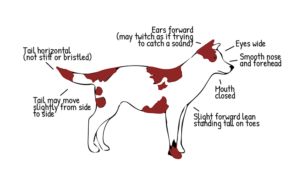
Body language speaks volumes, not only in human interactions but also in our bonds with our animal companions. These non-verbal cues can offer rich insights into their feelings, needs, and general well-being. Here’s a guide to understanding some of the most common forms of silent communication from our four-legged family members.
- Tail Wagging: A wagging tail doesn’t always mean happiness. The direction and speed can signal different emotions. A slow wag often indicates a relaxed state, while rapid wagging could mean excitement or even anxiety.
- Ear Position: Ears that are perked up typically indicate interest or alertness. On the other hand, pinned-back ears can be a sign of fear, submission, or even aggression.
- Eye Contact: Strong eye contact from your buddy might be a sign of trust or focus. However, prolonged staring can also be perceived as a challenge and may escalate tensions, especially with unfamiliar animals.
- Body Posture: A relaxed posture often means your companion is comfortable. A stiff body, raised hackles, or bared teeth, however, are signs of stress or aggression.
- Whining or Purring: Though not exactly body language, these vocalizations complement physical cues. Whining usually signals distress or need, while purring could mean your pal is content or trying to comfort themselves.
Reading these cues accurately can significantly improve your understanding of what your animal friend is trying to communicate. Remember, each animal is unique; the more you observe, the better you’ll understand their specific behavioral patterns. And as you get better at it, you’ll find that this unspoken form of dialogue can be just as rich and rewarding as any conversation. 🐾🎓
